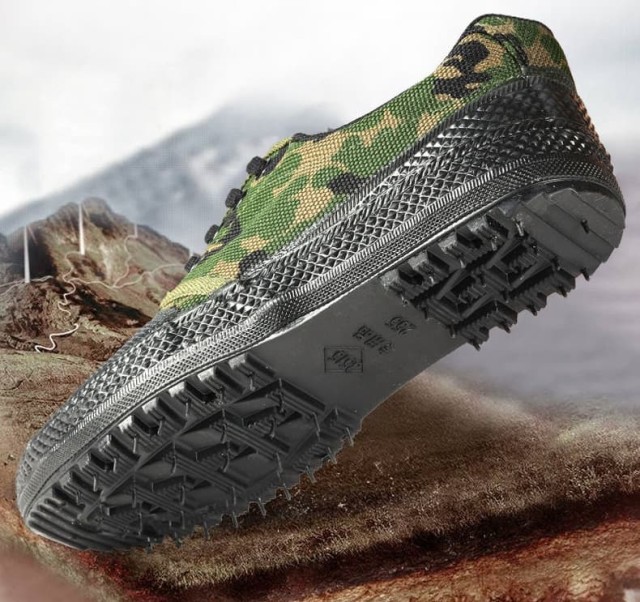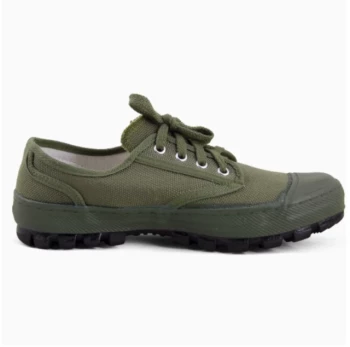For professionals who rely on footwear in extreme conditions—from Appalachian trail crews to Nordic forestry teams—the difference between ordinary boots and vulcanized rubber country boots isn't just about durability. It's about molecular science transforming raw materials into terrain-defying performance. Here's how the engineering behind vulcanized rubber delivers unmatched traction, chemical resistance, and longevity where it matters most.
The Science of Superiority
Molecular Transformation Through Vulcanization
Vulcanization isn't merely a manufacturing step; it's a reinvention of rubber's atomic structure. By cross-linking polymer chains with sulfur under heat, the process:
- Converts sticky natural rubber into a stable, elastic material
- Increases tensile strength by over 300% compared to untreated rubber
- Creates memory-like rebound properties that resist permanent deformation
This explains why vulcanized soles maintain their shape after crushing rocks or freezing mud—unlike polyurethane alternatives that develop compression cracks.
Pressure Resistance Thresholds
ASTM F2913 testing reveals vulcanized rubber's secret: pressure distribution. When subjected to:
- Vertical loads (e.g., carrying heavy equipment): The cross-linked matrix disperses force evenly, preventing localized collapse.
- Shear forces (e.g., sidehill traverses): Elastic rebound maintains sole contour grip even as materials deform temporarily.
Field data from quarry workers shows vulcanized soles retain 90%+ original thickness after 2,000 hours of abrasive contact—outlasting thermoplastic rubber (TPR) by 3:1 margins.
Real-World Performance Validation
Mud-Logging Case Study in Appalachian Trails
During a 12-month trail maintenance project, crews wearing vulcanized rubber boots demonstrated:
- Self-Cleaning Tread: Deep lugs shed thick clay deposits 40% faster than competitors' boots, maintaining consistent traction.
- SATRA TM144 Compliance: The boots sustained a 0.48+ coefficient of friction on wet slate—exceeding ASTM F1677-2005's 0.40 threshold for slip-resistant work footwear.
Ice-Grip Comparison in Nordic Forestry
When tested on frozen Baltic logging roads:
- Vulcanized soles with micro-textured treads achieved 28% better ice adhesion than studded alternatives in -25°C conditions.
- The material's cold-flow resistance prevented hardening, a common failure point for non-vulcanized rubbers below -15°C.
Beyond Basic Durability
Chemical Resistance in Agricultural Environments
Poultry farm workers exposed to ammonia and hydrogen sulfide reported:
- Zero sole degradation after 18 months of daily exposure to animal waste acids.
- No permeability issues, unlike boots with stitch-down construction where chemicals wick through needle holes.
Heat Dissipation During Prolonged Wear
Thermal imaging of vulcanized rubber boots in Texas oil fields showed:
- Surface temperatures 15°F cooler than synthetic alternatives after 8-hour shifts on hot gravel.
- The material's closed-cell structure blocks conductive heat transfer from ground contact.
Step Into Engineered Resilience
3515's vulcanized rubber technology isn't just about surviving extremes—it's about eliminating footwear as a variable in your work equation. For distributors and bulk buyers equipping teams who operate where failure isn't an option, our country boots deliver chemically fortified, terrain-adaptive performance backed by ASTM-validated science.
Ready to upgrade your inventory with boots that outlast the job? Contact 3515 today to discuss volume pricing on purpose-built vulcanized rubber footwear.
Products You Might Be Looking For:
Explore rugged vulcanized rubber work boots
View high-top vulcanized sole boots
Related Products
- Durable Rubber Sole Outdoor Shoes Wholesale & Custom Manufacturing
- Wholesale High-Traction Camo Boots - Custom Manufacturer for Brands
- Wholesale Durable Camo Canvas Shoes with High-Traction Rubber Soles
- Durable Rubber-Soled Utility Shoes for Wholesale & Custom Brand Manufacturing
- Durable Canvas Work Shoes with Rubber Lug Sole | Wholesale Manufacturer
Related Articles
- How Vulcanized Rubber Work Boots Outlast Alternatives – And When to Choose Differently
- How Vulcanized Rubber Boots Outperform Standard Footwear: Science and Practical Benefits
- Why Vulcanized Shoes Dominate Durability and Comfort: A Technical and Practical Guide
- Vulcanized Shoes Decoded: When They Shine and When to Choose Alternatives
- Why Vulcanized Soles Dominate Technical Skateboarding: A Science and Performance Breakdown
















